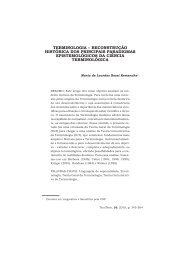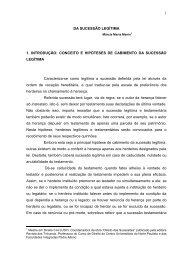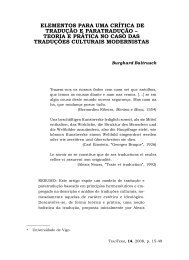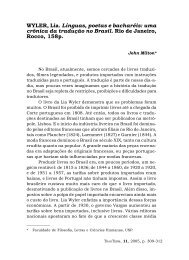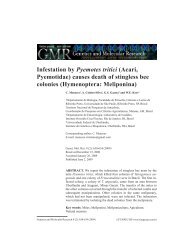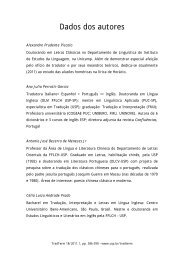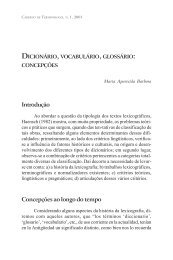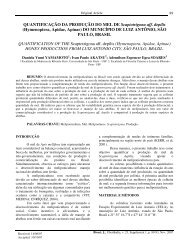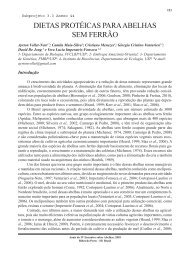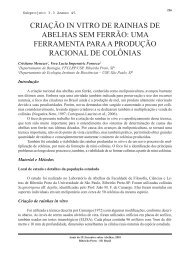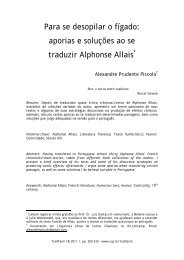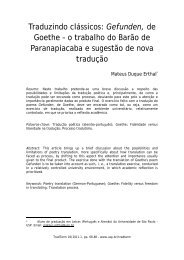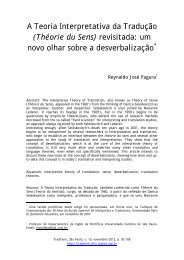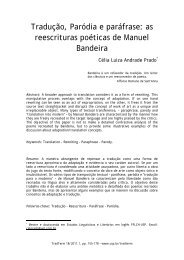Bees as pollinators in Brazil - USP
Bees as pollinators in Brazil - USP
Bees as pollinators in Brazil - USP
You also want an ePaper? Increase the reach of your titles
YUMPU automatically turns print PDFs into web optimized ePapers that Google loves.
78<br />
Coffee, a special commodity<br />
Most of the world coffee production is orig<strong>in</strong>ated<br />
from C. arabica shrubs, which are native<br />
to southwestern Ethiopia, <strong>as</strong> well <strong>as</strong> from C.<br />
canephora var. robusta (also known <strong>as</strong> C.<br />
robusta), native to equatorial Africa. Coffea<br />
arabica plants are typically grown <strong>in</strong> cold but<br />
frost-free are<strong>as</strong> at elevations of 500-200m, and<br />
C. canephora typically from sea level to 1000m<br />
(Kle<strong>in</strong>, et al., 2003a, Donald, 2004). Coffea<br />
canephora is a self-sterile, diploid species, and<br />
C. arabica is a self-sterile tetrapoid species<br />
(Kle<strong>in</strong>, et al., 2003a).<br />
Traditionally, coffee farm<strong>in</strong>g <strong>in</strong>volves the<br />
plant<strong>in</strong>g of coffee bush under a selectively<br />
th<strong>in</strong>ned canopy of exist<strong>in</strong>g ra<strong>in</strong>forest trees. This<br />
comb<strong>in</strong>ation of shad<strong>in</strong>g trees and coffee<br />
shrubs form an <strong>in</strong>tegrated agroforestry system<br />
(Donald, 2004). There are many benefits orig<strong>in</strong>ated<br />
from this way of production; first, shade<br />
cover up to 50% <strong>in</strong>cre<strong>as</strong>es yields, and the presence<br />
of shade trees can control pest problems;<br />
furthermore, the quality and size of coffee<br />
beans, <strong>as</strong> well <strong>as</strong> the t<strong>as</strong>te of the f<strong>in</strong>al product<br />
are better under shade systems than under systems<br />
without trees. However, this method w<strong>as</strong><br />
replaced for a full-sun production <strong>in</strong> many<br />
places. Where good soils and favorable climates<br />
are present, this method produces higher<br />
yields per unit area, although not necessarily<br />
per plant. Nevertheless, this method also produces<br />
some collateral effects, <strong>as</strong> an <strong>in</strong>cre<strong>as</strong>ed<br />
rate of pest problems and secondary pesticide<br />
problems. Nowadays, shad<strong>in</strong>g is only used<br />
where it is necessary to reduce yields to keep<br />
production susta<strong>in</strong>able <strong>in</strong> poor-nutrient soils,<br />
where shade-lov<strong>in</strong>g varieties are grown, and<br />
where shade trees form part of economic agroforestry<br />
systems (Donald, 2004).<br />
Another important issue related with coffee<br />
production is the presence or absence of<br />
poll<strong>in</strong>at<strong>in</strong>g <strong>in</strong>sects. Formerly, the importance<br />
of <strong>poll<strong>in</strong>ators</strong> for coffee shrubs w<strong>as</strong> neglect-<br />
ed (Free, 1993), but <strong>in</strong> recent years their<br />
importance is be<strong>in</strong>g evidenced after a series<br />
of experiments made <strong>in</strong> several countries.<br />
Here we describe these results <strong>in</strong> order to<br />
show the importance of <strong>poll<strong>in</strong>ators</strong> for the<br />
coffee harvest.<br />
A pioneer work <strong>in</strong> this area w<strong>as</strong> performed<br />
by Nogueira-Neto, et al., (1959), which<br />
<strong>in</strong>vestigated the effect of the exclusion of poll<strong>in</strong>at<strong>in</strong>g<br />
<strong>in</strong>sects on the yield of the variety<br />
Bourbon (C. arabica var. Bourbon) <strong>in</strong> a farm <strong>in</strong><br />
São Paulo State, <strong>Brazil</strong>. They found a tendency<br />
(although the differences were not significant)<br />
towards a higher production of fruits on the<br />
plants that were allowed to receive the visit of<br />
poll<strong>in</strong>at<strong>in</strong>g <strong>in</strong>sects, <strong>in</strong> contr<strong>as</strong>t to a control<br />
group, which plants were not allowed to be<br />
visited. They also observed several species of<br />
native and <strong>in</strong>troduced bees visit<strong>in</strong>g coffee<br />
flowers, <strong>as</strong> the <strong>in</strong>troduced Apis mellifera and<br />
the st<strong>in</strong>gless bee Melipona quadrif<strong>as</strong>ciata,<br />
both relatively big sized bees, the most effective<br />
<strong>poll<strong>in</strong>ators</strong> of coffee flowers <strong>in</strong> their observations<br />
(a total period of observations of six<br />
years). Accord<strong>in</strong>g to the authors, the smaller<br />
bees (Nannotrigona testaceicornis, Plebeia sp.,<br />
Tetragonisca angustula, Trigona hyal<strong>in</strong>ata and<br />
T. sp<strong>in</strong>ipes) observed <strong>in</strong> the flowers, collect<strong>in</strong>g<br />
pollen and/or nectar were not so effective <strong>poll<strong>in</strong>ators</strong><br />
<strong>as</strong> these big sized bees. They concluded<br />
that for this variety of coffee (Bourbon),<br />
<strong>in</strong>sect visits are not so important <strong>as</strong> for the<br />
diploid self-sterile species of Coffea arabica,<br />
which needs the visit<strong>in</strong>g of <strong>in</strong>sects, especially<br />
bees, <strong>as</strong> well <strong>as</strong> the w<strong>in</strong>d, for their poll<strong>in</strong>ation<br />
(Nogueira-Neto, et al., 1959).<br />
Roubik (2002) strongly suggested the<br />
importance of honey bees and native bees for<br />
the <strong>in</strong>cre<strong>as</strong><strong>in</strong>g of poll<strong>in</strong>ation of C. arabica<br />
plants <strong>in</strong> the New World, <strong>as</strong> well <strong>as</strong> <strong>in</strong> the Old<br />
World. He found a positive correlation<br />
between the coffee yields and the presence of<br />
honey bees <strong>in</strong> the New World. As Africanized



